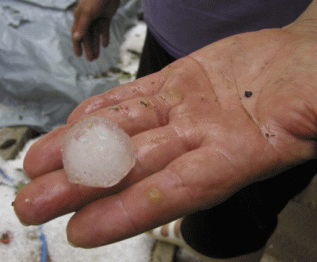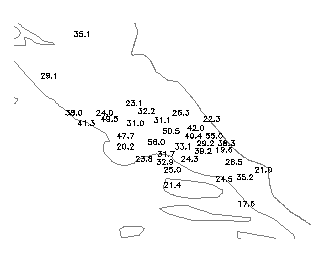Introduction
In the early hours of 04 July 2003, the region of central Dalmatia, a coastal part of Croatia was devastated by a severe thunderstorm. Heavy rain and hail destroyed all the crops and vegetables in the fields in just a few hours. The amount of rainfall exceeded 30 mm in less then an hour, and there were also stations measuring 50 mm or even more in only 30 minutes. Some Dalmatian towns experienced flash floods, with water flowing onto the streets and some roads had to be closed.
|
Flash-flood in Split; photography courtesy of daily newspapers `Jutarnji listī, 05.07.2003
|
Hail-stones in Dalmatia; photography courtesy of daily newspapers `Jutarnji listī, 05.07.2003
|
|
Devastated crops in Dalmatia; photography courtesy of daily newspapers `Jutarnji listī, 05.07.2003
|
|
In many places this was equivalent to the total monthly rainfall, and some amounts were measured within only 30 minutes.
In addition, heavy hail and hail showers, together with strong winds occurred in many locations. In the vicinity of Sibenik hail was the size of walnuts and further inland, vegetables, vineyards and olive trees were almost completely destroyed by strong hail showers. Damage to houses, cars and trees was also widespread.
|
04 July 2003 - Rainfall in southern Croatia
|
04 July 2003 - Hail occurrence in the morning hours. The numbers stand for the order of appearance of hail. The light violet signs
stand for the stations which reported hail in the morning, but without the exact time of appearance.
|
Convective development is not rare along the Croatian Adriatic coast and the near inland. It usually occurs in a south-westerly upper-level flow bringing warm and humid air to the Adriatic. Because of the orographic barrier provided by many islands near the coast and, at a larger scale, by the Dinaric Alps, the air is forced to rise. When such rising is reinforced by either synoptic-scale conditions or some meso-scale process, severe convective development such as that described here, can occur.




